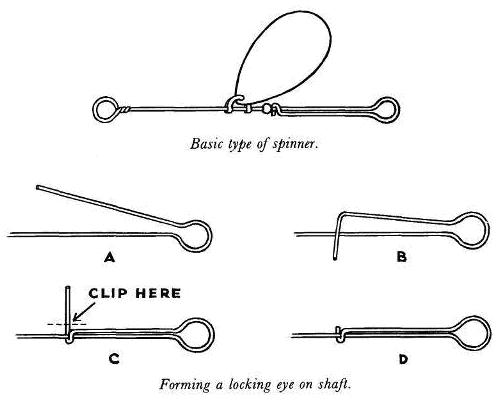|
Fish Trolling SpinnersTrolling For Fish With
|
These methods of attaching a hook to a fish trolling spinner are used if you plan to change the hook often. If, however, you want to make a stronger, permanent attachment you merely form an eye on the end of the wire shaft, slip on the treble hook, and then close the eye for good.
The basic spinner above for fish trolling makes use of a single blade. If you want to add another blade to the shaft, use a slightly longer wire and after slipping on the first blade add a small metal bead which you then solder to the shaft above the first blade.
Then slip on a loose bead or two and your second blade before forming the eye at the front of the wire shaft. This is shown below.
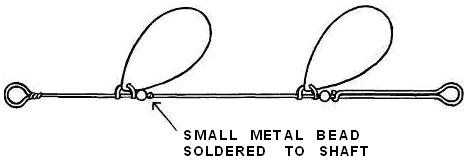
Another popular and effective spinner for fish trolling is the "June Bug" type shown below. The June Bug blade has an extension cut from the blade itself, and this keeps the blade revolving at a fixed distance from the shaft.

This spinner works very freely and smoothly even at slow speeds. When making this type of spinner use the large red ruby cut glass beads as bearings on the shaft, and add a barrel swivel to which the line is tied.
At the other end, attach a long-shank single hook such as the Carlisle pattern. Anglers usually use this spinner for fish trolling with the hook baited with a minnow, strip offish, pork rind, or a gob of worms.
You can also make this spinner with two blades by using a longer wire shaft and adding a smaller blade up front, as shown below.

The propeller type of spinner shown below is also good to use for fish trolling at slow speeds. You can buy the propeller blades in the largest sizes from the fishing lure parts suppliers.
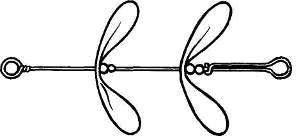
The two propeller blades used to make this spinner are spaced so that they revolve freely without interfering with each other. You have to solder a metal bead to the wire shaft to keep the first propeller blade away from the rear one. This type of spinner is usually used with a feathered treble hook attached behind it.
Another popular spinner for fish trolling is the type known as the "Cherry Bobber" or "Cherry Drifter" shown below. This spinner makes use of a wooden, pear-shaped body which gives it buoyancy and prevents it from sinking too fast.
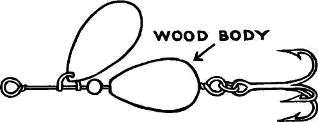
You can make these bodies from any light wood, but balsa is preferred because it is easy to work. You can also order these wood bodies, all ready shaped from a mail-order house.
The wood body is then painted a bright red —a daylight fluorescent lacquer is best for this. Likewise, fluorescent plastic beads are slipped on the wire shaft to act as bearings. A small treble hook is attached to the tail end of the spinner.
Still another old-time favorite among fish trolling spinners is the "Colorado" shown below. Here, instead of using a wire shaft, you use two barrel swivels and two split rings.
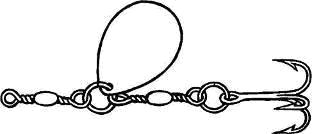
The blade, which is the round type Colorado, is attached to the split ring as shown. The split ring at the tail holds either two single hooks or one treble hook.
|
| Freshwater Fishing | Bass Fishing | Saltwater Fishing | | Fishing Spoons | Fishing Spinners | Fishing Jigs | | Sinkers | Making Fishing Leaders | Hand Tools | | Link To Us | Contact Us | Preferred Partners | About This Site | | Site Map | |
| Back to Top of Fish Trolling |
Make-Your-Own-Fishing-Lures.com
© 2004 Make-Your-Own-Fishing-Lures.com. All Rights Reserved.




